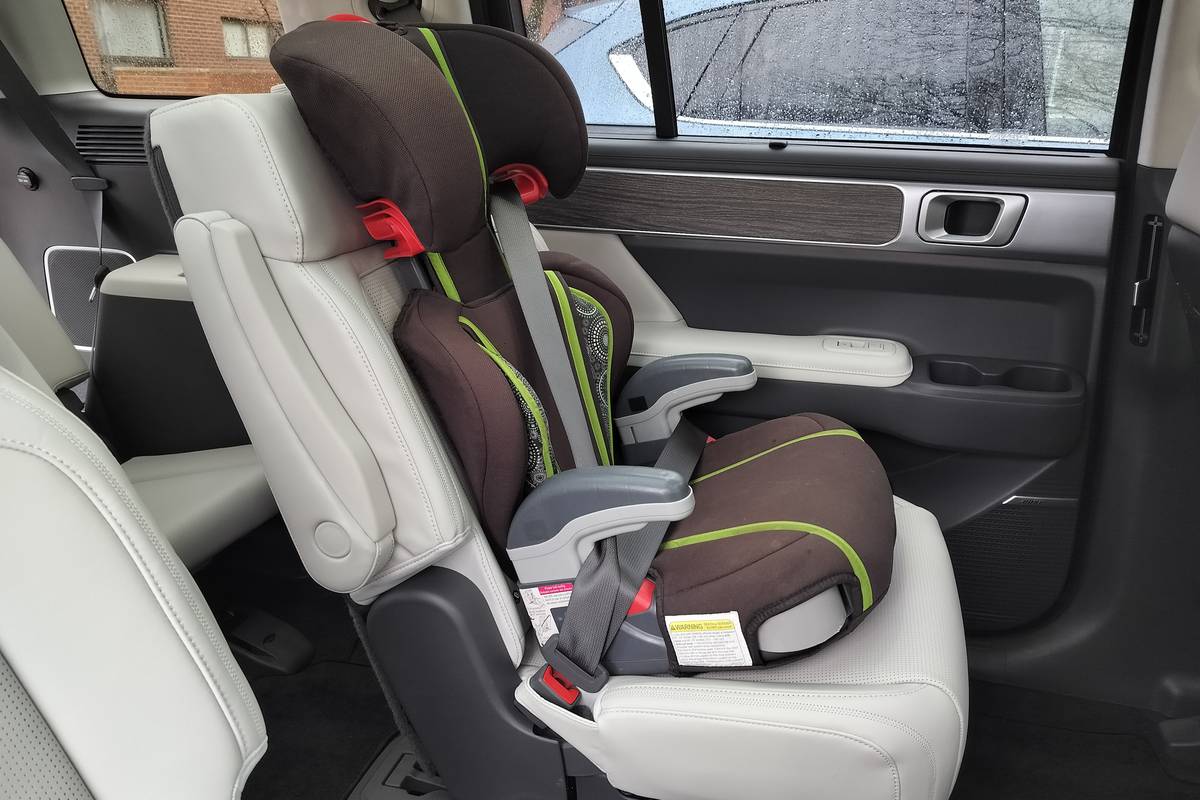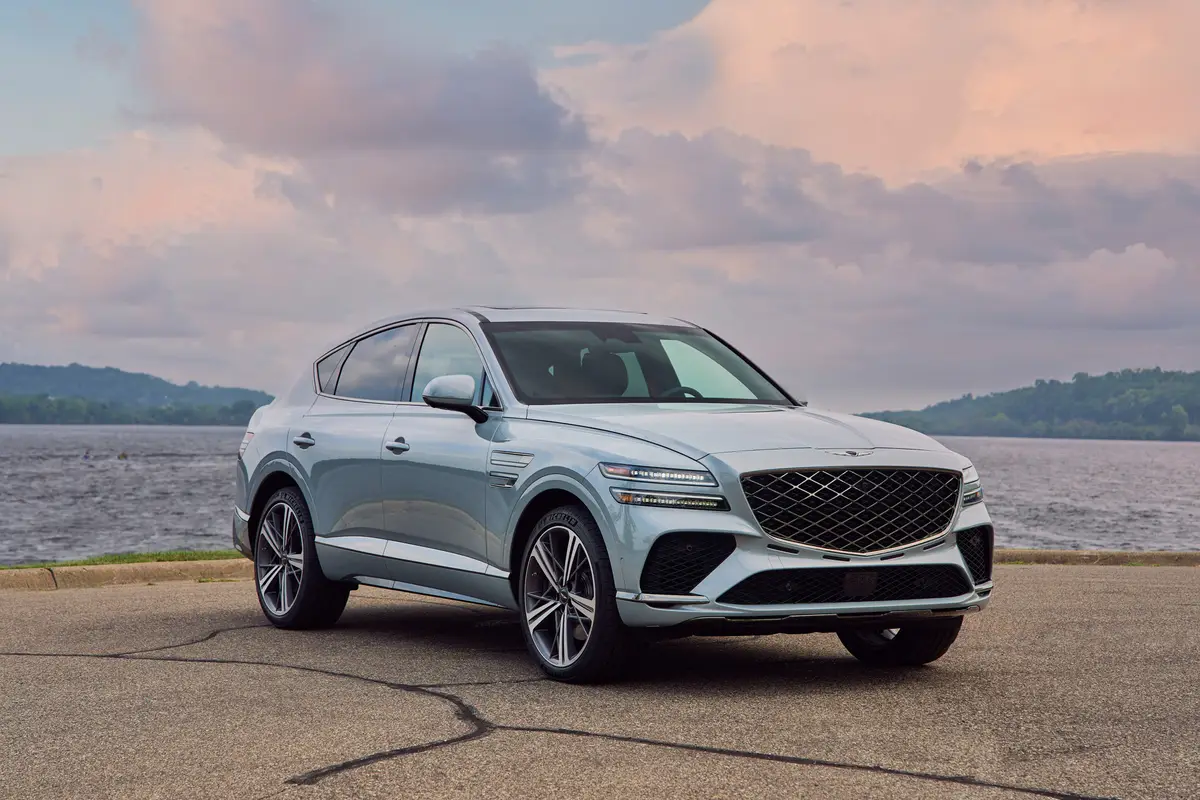Star-Telegram.com's view
YOUNTVILLE, Calif. — An already very good Range Rover lineup is getting even better for 2006, with some key changes to the base HSE model, as well as the addition of an exciting new supercharged version — the most powerful Range Rover ever built. The newest models, which go on sale in June, improve upon the completely redesigned Range Rover that debuted for 2003.
This time, though, the engines will be from Jaguar, replacing the V-8 that Land Rover had been buying from German luxury automaker BMW, the former owner of Land Rover. Land Rover’s short life as a subsidiary of BMW ended in mid-2000 when the German automaker sold the British SUV brand to Ford Motor Co.
But there was one huge benefit to both Land Rover and BMW that came from the four-year association between the two companies: the joint development of a new luxury sport utility platform that was used by Land Rover for its newest generation of the upscale Range Rover, which debuted in 2002 as an ’03 model.
As part of that arrangement, the engine used in the all-new model was a normally aspirated 4.4-liter V-8 provided by BMW that cranked out 283 horsepower, up from 222 for the 2002 Range Rover model’s 4.6-liter V-8.
For 2006, the base engine is now a normally aspirated aluminum 4.4-liter Jaguar V-8 rated at 305 horsepower and 325 foot-pounds of torque and is what you get with the Range Rover HSE model, with an ’06 sticker price of $74,950 (plus freight and options).
Those willing to spend $89,950 (plus freight and options) will get a supercharged 4.2-liter aluminum V-8, also from Jaguar, rated at 400 horsepower and 420 foot-pounds of torque.
Both engines are connected to a new six-speed automatic transmission with Command Shift manual shift option.
During a recent media introduction of the 2006 Range Rover models in the California Wine Country, company officials said the move to Jaguar engines was a natural progression of Land Rover’s association with Ford. Jaguar, the British sports car company, has been a wholly owned subsidiary of Ford since 1994.
Although the Range Rover line was completely redesigned for 2003, there are substantial changes for the 2006 models designed to build upon the success the company has had with the current generation, said Matthew Taylor, managing director of Land Rover at its British headquarters.
“In the three years since we launched the new model, it has become our most successful Range Rover ever,” he said.
The company has been selling about 14,000 of the vehicles in the United States each year, he added.
The changes for 2006 have been designed to help keep the momentum going, Land Rover North America spokesman Larry Rosinski said.
“We have been proactive in bringing significant improvements to this vehicle,” he said. “We need to keep it on top, and we’re doing that with a host of improvements.”
Besides the engines, other new features for 2006 include more sound damping elements for a quieter ride; exterior changes such as a new front bumper, new headlights and new taillights, a new front grille for the HSE and a separate mesh design for the supercharged model; revised bodyside air vents; and new 19-inch wheels.
Other than the unique grille and engine, the supercharged model also gets premium leather interior trim, Brembo front brakes, adaptive headlights, 20-inch alloy wheels, different air vents and special black-on-silver badging.
Steering has been enhanced, and the air suspension system has been improved, the company said.
The vehicle’s overall look remains unchanged, however.
The formula that has made the Range Rover a successful flagship for the Land Rover brand since its introduction in 1970 is that it’s four cars in one, said Geoff Upex, Land Rover’s design director.
“It has the luxury of a saloon, the acceleration of a performance car, the stylish body of an estate, and the ruggedness and versatility of a Land Rover,” he said.
In Britain, a saloon is a large sedan, and an estate is what Americans call a station wagon. Even though the 2003 model represented a complete makeover — the first since the Range Rover was born — the vehicle today is “still instantly recognizable from 200 meters as a Range Rover,” Upex said. “It stands out.”
One of the vehicle’s main attributes as a luxury sport utility has been its ability to fit in just about anywhere it goes, Upex said.
“The Range Rover is a vehicle whose understated elegance means it’s never out of place,” he said.
Unlike some of the newer high-end SUVs, the Range Rover is as capable off-road as it is on the highway, in keeping with the vehicle’s heritage as a vehicle designed to allow the British to explore their empire in a vehicle that offers the comforts of home.
The ’03 model replaced the Range Rover that had been on sale in the United States in basically the same form since Land Rover opened its U.S. distribution network in 1987. There had been many upgrades to the vehicle, but the body styling and chassis remained essentially the same, as did the engines, until the BMW design was incorporated in the 2003 model.
This newest generation has nothing in common with the old ones other than the name and the feel that, even with its BMW heritage, it still is a Range Rover.
Where the old Range Rover came with an aluminum body mounted on a steel ladder-frame chassis, the new one has a one-piece monocoque body with integrated frame, and some exterior body panels are steel. The doors, fenders and hood are made of aluminum, however.
BMW and Land Rover spent more than $1 billion to develop the new vehicle platform. Land Rover and Jaguar are two of Ford’s three British luxury brands; the third is Aston Martin. Together with Sweden’s Volvo, the four brands make up Ford’s Premier Automotive Group, based in Irvine, Calif.
The Range Rover is the flagship of the Land Rover brand, and with that high price tag, the demographics are impressive. The typical buyer is a professional or executive male, college graduate, with an annual household income of about $375,000.
As usual, the Range Rover comes with permanent four-wheel drive, a two-speed transfer case that provides low-range gearing for serious off-roading and Land Rover’s patented Hill Descent Control system. New in 2003 was shift-on-the-fly capability for the transfer case.
High-tech features abound. Among the gadgetry are such things as a GPS satellite navigation system, electronic air suspension, four-wheel traction control, Land Rover’s electronic brakeforce distribution system and a trip computer/driver information system.
The interior is rich-looking, with leather seat surfaces, wood trim and an instrument panel with center console that looks more like that of a modern jet aircraft than a car.
There are bucket seats up front and a rear bench seat for up to three people, with lots of knee room. No third seat is offered, so the vehicle is limited to five people.
Other standard features include dual-zone automatic climate control, power-everything, all-terrain dynamic stability control, eight air bags, front and rear parking distance warning systems and rearview camera system, heated windshield, front and rear fog lamps, cruise control, Harman/Kardon digital surround-sound audio system with six-disc CD changer and 14 speakers, tire-pressure monitoring system and tilt/telescoping steering column.
Options include Sirius satellite radio, a rear-seat DVD entertainment system, a luxury interior package, and heated seats and steering wheel.
EPA combined city/highway fuel economy ratings are 18.3 miles per gallon for the normally aspirated engine and 17.5 for the supercharged.
Range Rover says top speed of the normally aspirated model is 125 mph, and the vehicle accelerates from zero to 60 mph in 8.3 seconds. For the supercharged model, zero to 60 is achieved in 7.1 seconds, and top speed is 130 mph.
G. Chambers Williams III is staff automotive columnist for the San Antonio Express-News and former transportation writer for the Star-Telegram. His automotive columns have appeared regularly in the Star-Telegram since 1995. Contact him at (210) 250-3236; chambers@star-telegram.com.
Latest news



